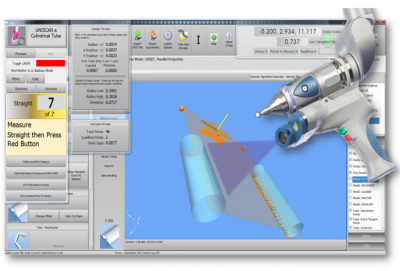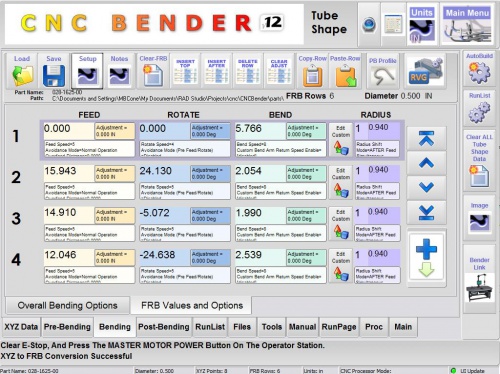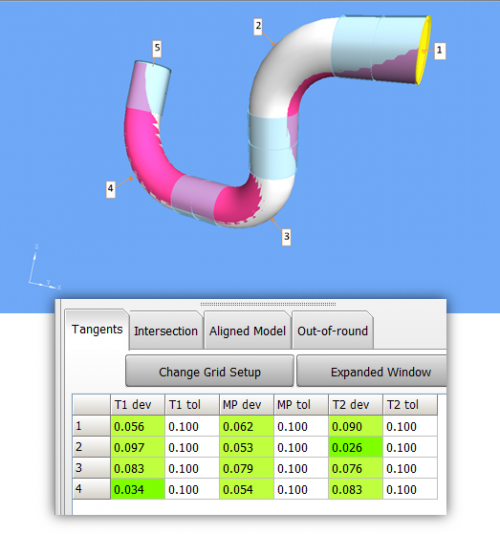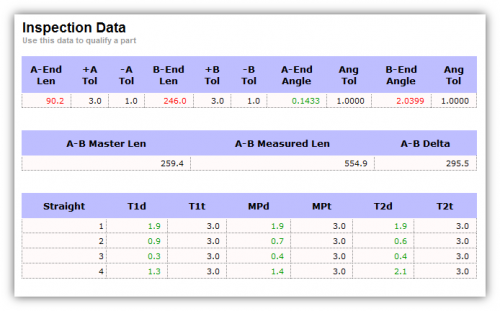The Limitations of Qualifying Tube Shapes using Bender Data
|
|
Contents |
What is Bender Data?
|
Bender data is the data used to setup tube bending machines. Usually, bender data has at three major columns of data - the LENGTH between bends, ROTATION planes between bends, and BEND ANGLE columns. These columns can be used to define the shape of a tube and setup a tube bender.
|
The Limitations of Bender Data for Qualifying Tube Shapes
|
The tube fabrication industry rarely uses bender data to qualify part shapes for a very good reason. |
Illustration of the LimitationLook at the bender data on the right. The two sets are not the same because I've made the MEASURED rotations to be exactly one degree away from MASTER data rotations. |
Visually Demonstrate the Problem of Qualifying with Angles
|
Unless you can perform 3D trigonometry mentally on-the-fly, the answer to the question above isn't obvious. Even if we make a guess, we can't accurately guess at what tolerance envelope value the part would be considered acceptable. |
|
INSIDE THE ENVELOPES: QUALIFIES |
|
OUTSIDE THE ENVELOPES: DOES NOT QUALIFY |
Example 2
|
We show another smaller part with two tolerance envelope setups. |
The Best Data for Qualification
|
You've probably already figured out from the examples above that the best data for tube shape qualification is centerline TANGENT POINT data in the Inspection Data menu and in the Reports menu. |









